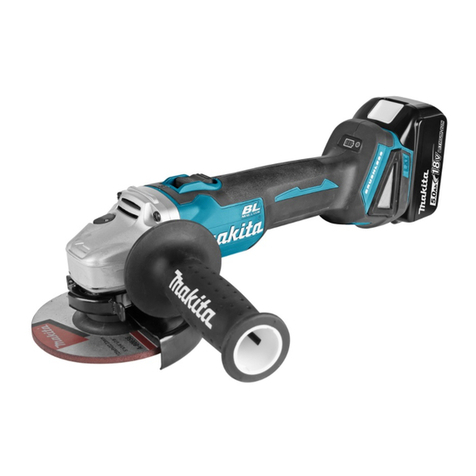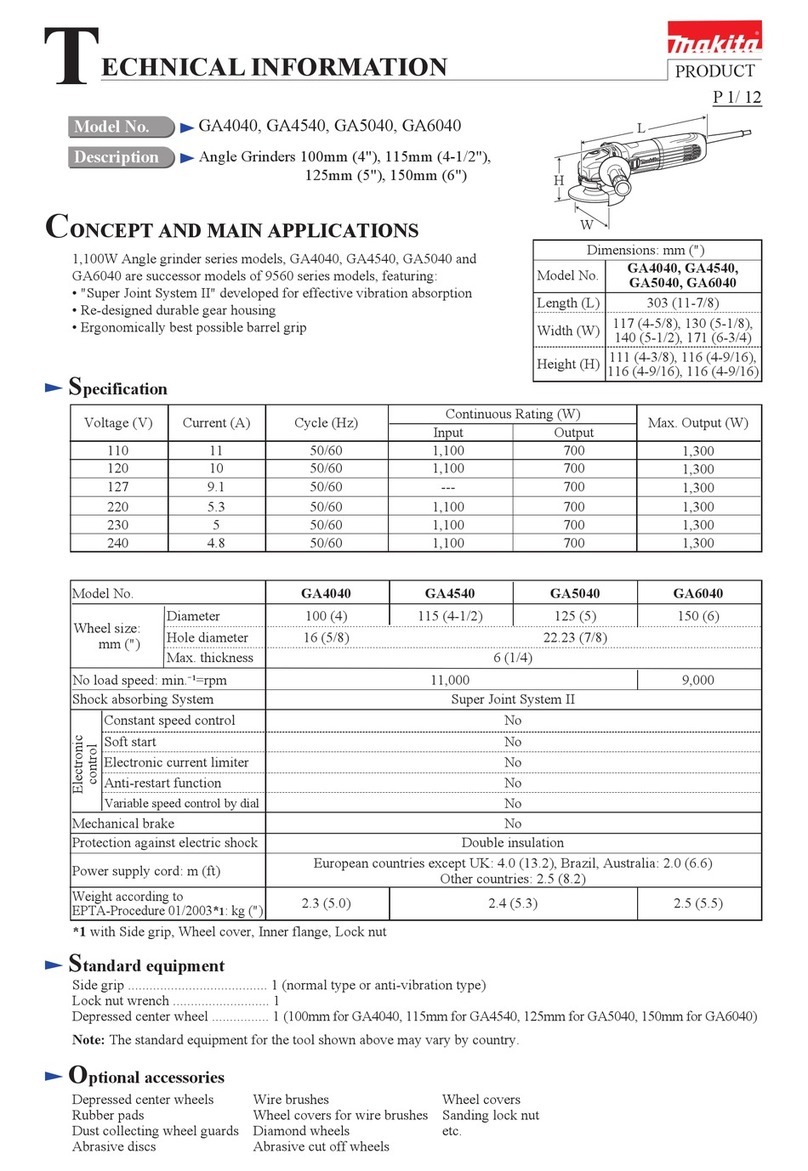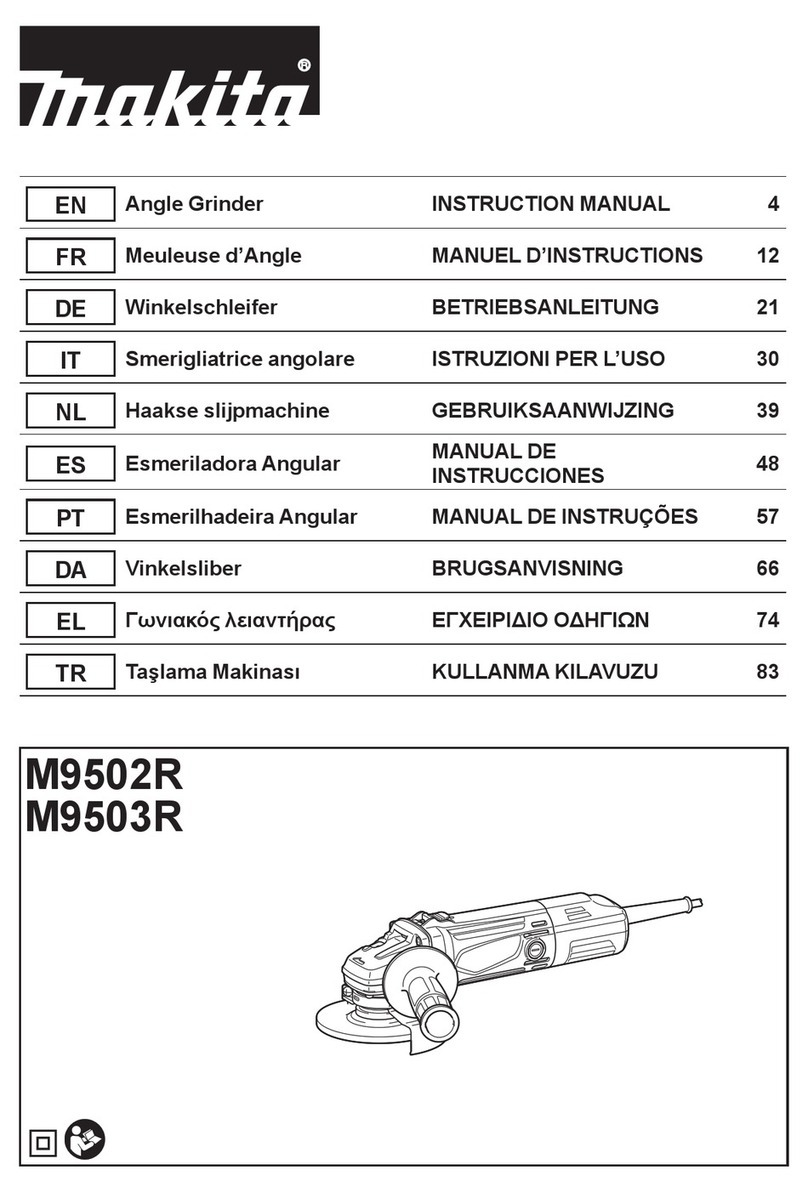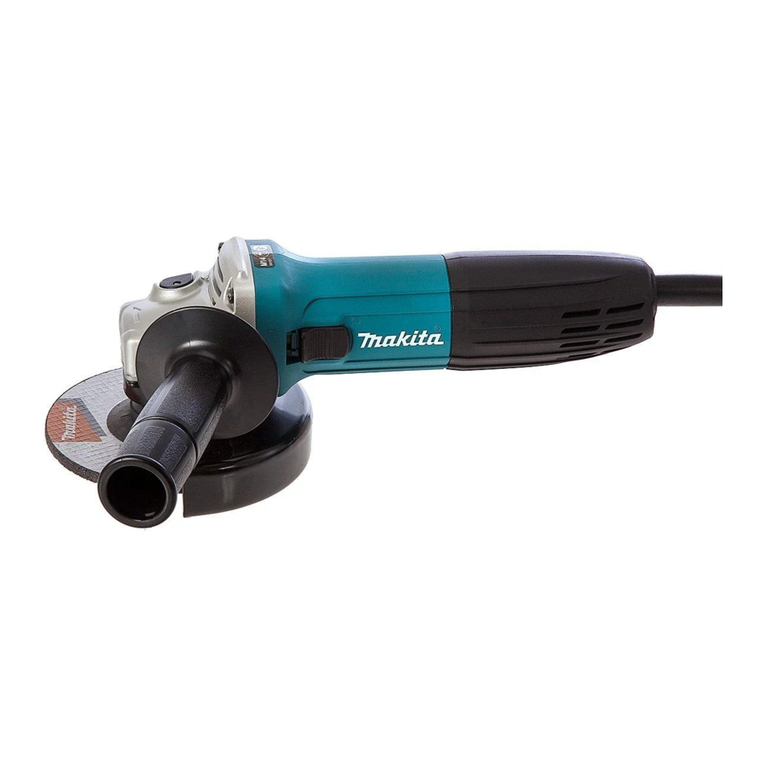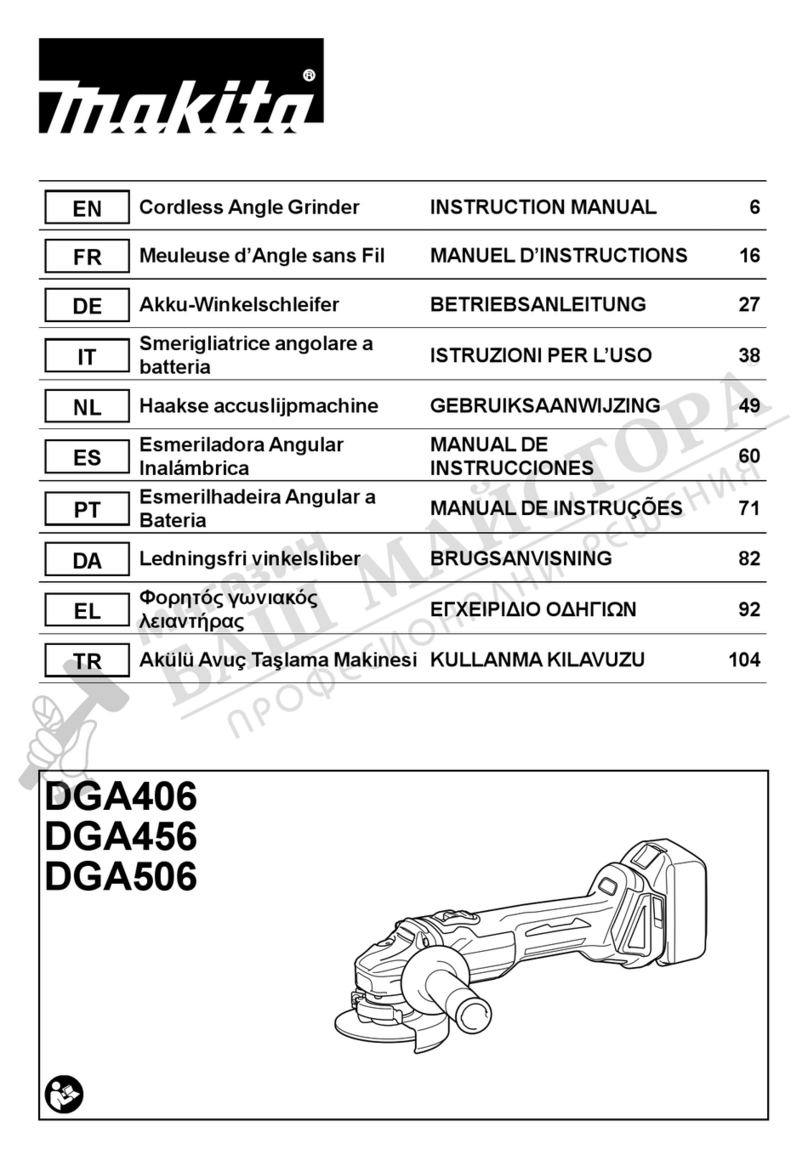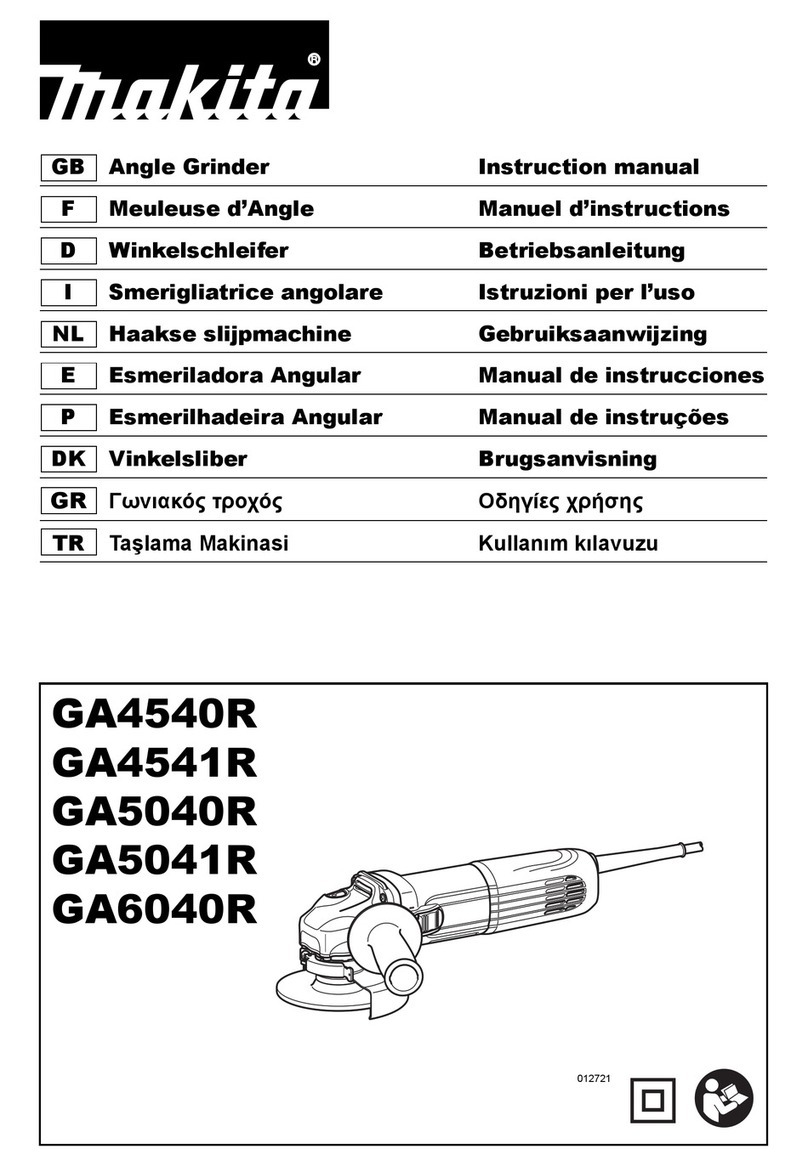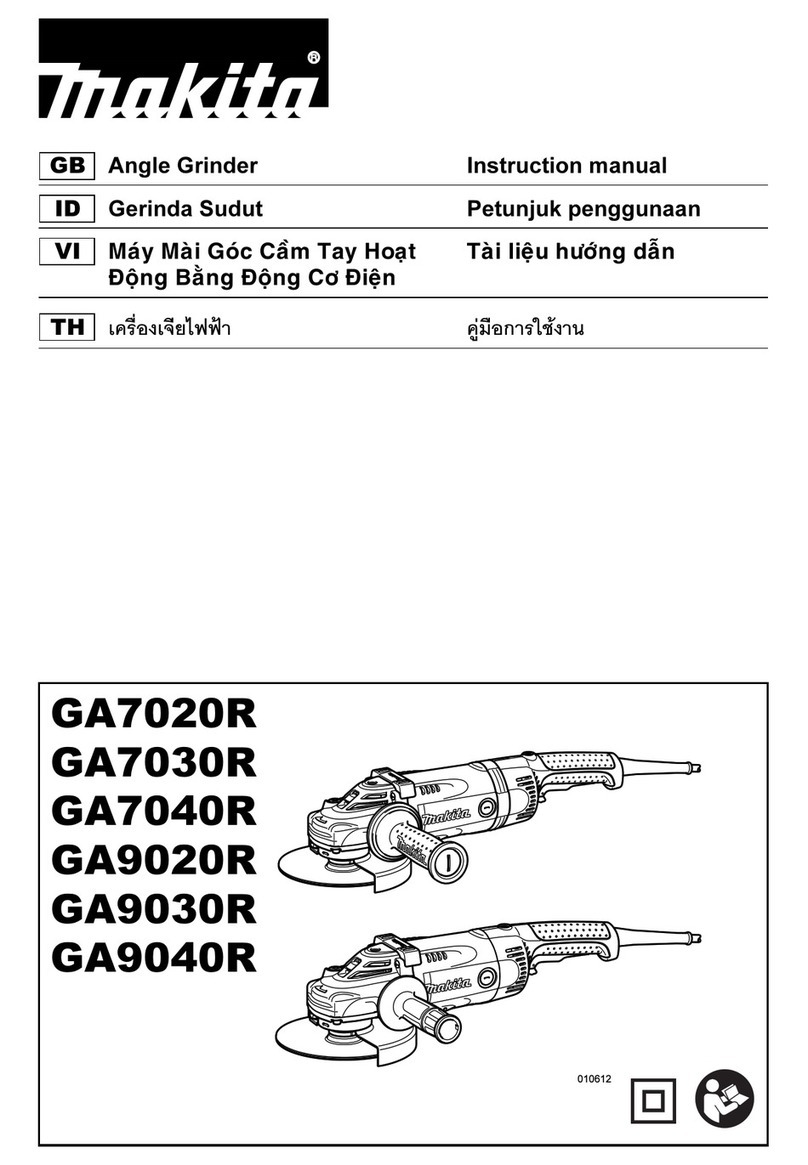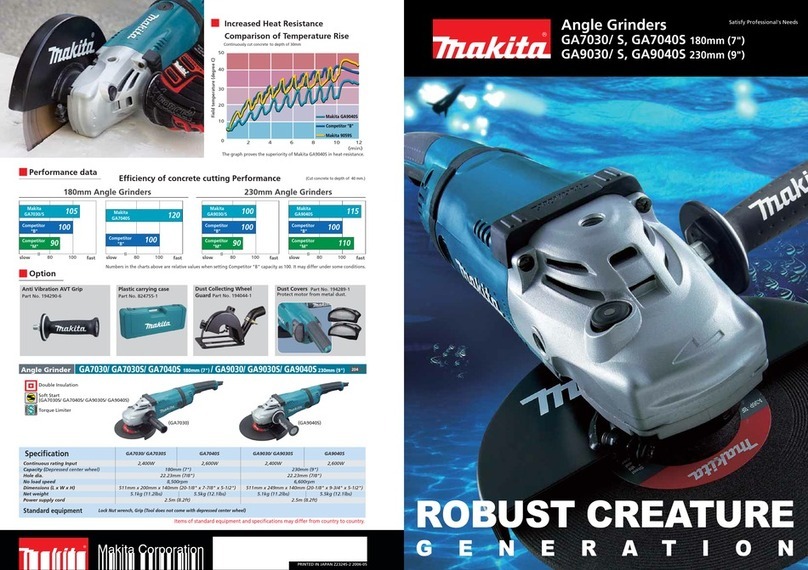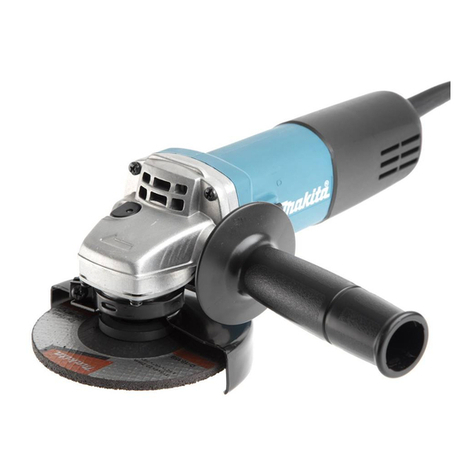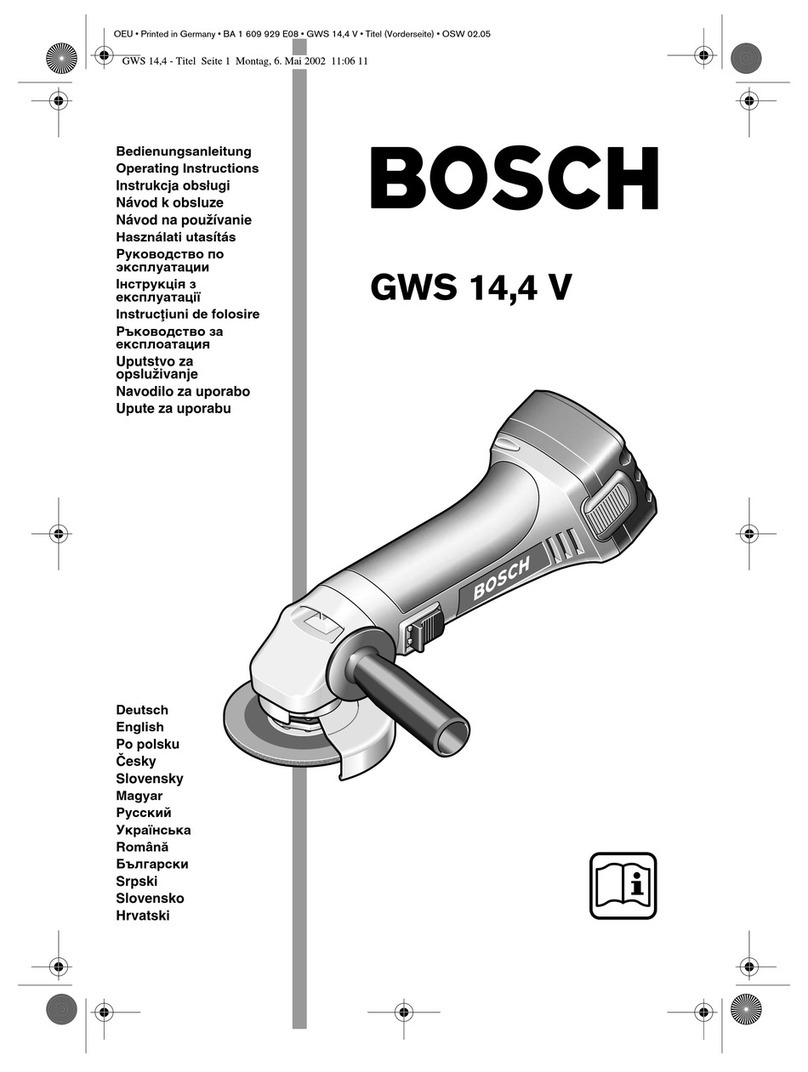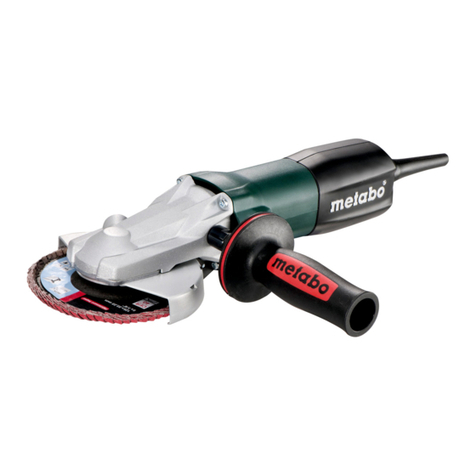
6
ADDITIONAL SAFETY RULES
ENB031-5
1. Always use eye and ear protection. Other per-
sonal protective equipment such as dust mask,
gloves, helmet and apron should be worn when
necessary. If in doubt, wear the protective equip-
ment.
2. Always be sure that the tool is switched off and
unplugged before carrying out any work on the
tool.
3. Keep guards in place.
4. Use only wheels with correct size and wheels
having a maximum operating speed at least as
high as the highest No Load Speed marked on
the tool’s nameplate. When using depressed
center wheels, be sure to use only fiberglass-
reinforced wheels.
5. Check the wheel carefully for cracks or damage
before operation. Replace cracked or damaged
wheel immediately.
6. Observe the instructions of the manufacturer for
correct mounting and use of wheels. Handle and
store wheels with care.
7. Do not use separate reducing bushings or adap-
tors to adapt large hole abrasive wheels.
8. Use only flanges specified for this tool.
9. Do not damage the spindle, the flange (espe-
cially the installing surface) or the lock nut. Dam-
age to these parts could result in wheel
breakage.
10. For tools intended to be fitted with threaded hole
wheel, ensure that the thread in the wheel is long
enough to accept the spindle length.
11. Before using the tool on an actual workpiece,
test run the tool at the highest no load speed for
at least 30 seconds in a safe position. Stop
immediately if there is any vibration or wobbling
that could indicate poor installation or a poorly
balanced wheel. Check the tool to determine the
cause.
12. Check that the workpiece is properly supported.
13. Hold the tool firmly.
14. Keep hands away from rotating parts.
15. Make sure the wheel is not contacting the work-
piece before the switch is turned on.
16. Use the specified surface of the wheel to per-
form the grinding.
17. Do not use cutting off wheel for side grinding.
18. Watch out for flying sparks. Hold the tool so that
sparks fly away from you and other persons or
flammable materials.
19. Pay attention that the wheel continues to rotate
after the tool is switched off.
20. Do not touch the workpiece immediately after
operation; it may be extremely hot and could
burn your skin.
21. Position the tool so that the power cord always
stays behind the tool during operation.
22. If working place is extremely hot and humid, or
badly polluted by conductive dust, use a short-
circuit breaker (30 mA) to assure operator safety.
23. Do not use the tool on any materials containing
asbestos.
24. Do not use water or grinding lubricant.
25. Ensure that ventilation openings are kept clear
when working in dusty conditions. If it should
become necessary to clear dust, first disconnect
the tool from the mains supply (use non metallic
objects) and avoid damaging internal parts.
26. When use cut-off wheel, always work with the
dust collecting wheel guard required by domes-
tic regulation.
27. Cutting discs must not be subjected to any lat-
eral pressure.
SAVE THESE INSTRUCTIONS.
OPERATING INSTRUCTIONS
Installing the wheel guard (Fig. 1 & 2)
Mount the wheel guard with the tab on the wheel guard
band aligned with the notch on the bearing box. Then
rotate the wheel guard 180° clockwise (for 9526PB) or
counterclockwise (for 9527PB and 9528PB). Be sure to
tighten the screws securely.
Installing side grip (auxiliary handle) (Fig. 3)
For your own safety always use the side grip. The side
grip can be installed on either side of the tool.
Installing or removing the depressed center
wheel
CAUTION:
• Always be sure that the tool is switched off and
unplugged before installing or removing the wheel.
Mount the inner flange onto the spindle. Fit the wheel on
over the inner flange and screw the lock nut onto the
spindle. (Fig. 4)
To tighten the lock nut, press the shaft lock firmly so that
the spindle cannot revolve, then use the lock nut wrench
and securely tighten clockwise. (Fig. 5)
WARNING:
• Only actuate the shaft lock when the spindle is not
moving.
Installing or removing diamond wheel
(accessory) (Fig. 6 & 7)
CAUTION:
• Make sure that the arrow on the tool should point in the
same direction as the arrow on the diamond wheel.
Mount the inner flange onto the spindle. Fit the diamond
wheel on over the inner flange and screw the lock nut
onto the spindle. Notice that flat side of the lock nut
should face the diamond wheel in case the diamond
wheel is used.
Switch action (Fig. 8)
CAUTION:
• Do not pull the switch trigger forcibly without pushing in
the lock-off button.
• Before plugging in the tool, always check to see that
the switch actuates properly and returns to the “OFF”
position when released.
To prevent the switch trigger from being accidentally
actuated, a lock-off button is provided. To start the tool,
push in the lock-off button and then pull the switch trig-
ger. Release the switch trigger to stop. For continuous
operation, pull the switch trigger and then push in the
lock-on button. To stop the tool from the locked position,
pull the trigger fully, then release it.

